
| 1911: A cooperative weather station begins recording temperature and precipitation at the Texas Agricultural Experiment Station, located 3 miles east of the Lubbock Post Office. | |
| 1936: The cooperative station is moved to the Lubbock Municipal Airport located five miles north of the Post Office. Note the wind instruments atop the hangar in the photo. Photo courtesy of Sarah Hensley. | 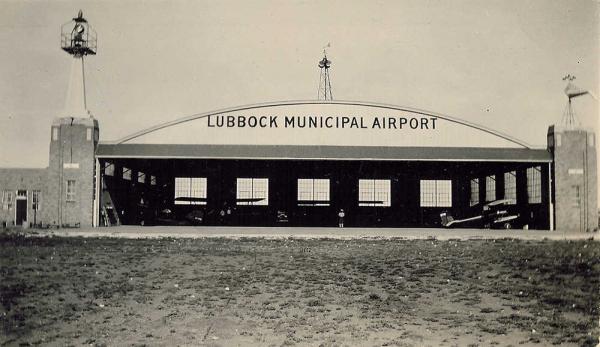 |
| 1940: An office is established in the Texas Technological College (now TTU) Chemistry Bldg, but when America entered World War II in December 1941, the office was promptly moved back to the airport to support pilot training. | |
| November 6, 1946: The U.S. Weather Bureau Office in Lubbock is officially established at the airport on the north side of the main hangar. Leo Weaver became the first Meteorologist-in-Charge and shared duties with just three other meteorologists to cover the office's 24 / 7 operations. | 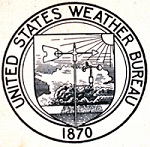 |
| 1948: The weather office moves to a new building northeast of the primary hangar. | |
| October 7, 1948: Harold "Jack" Frost becomes the new Meteorologist-in-Charge at the U.S. Weather Bureau station in Lubbock. He succeeded Leo Weaver who relocated to the San Angelo weather station. Mr. Frost would serve out the remaining 31 years of his Federal Service in Lubbock and in 1970 was awarded a Department of Commerce Gold Medal for his outstanding leadership in the severe weather preparedness program. | 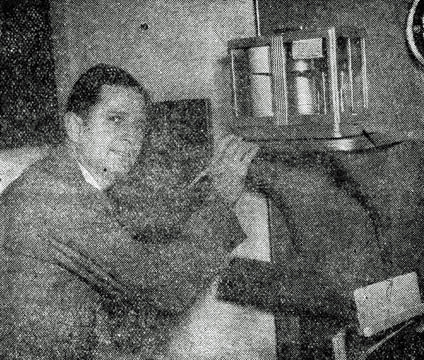 |
| 1950: The office moves again to a new terminal building at the airport. The wind equipment was installed on top of the tower at 68 feet above ground. | |
| October 1950: The office begins making dew forecasts for area farmers. Dew forecasts greatly assist farmers who apply chemical defoliants for cotton harvesting. Additional agricultural products such as weekly and seasonal weather outlooks are also generated. | 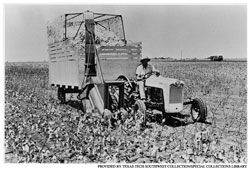 |
| April 1952: A joint operation named "Operation Tornado Alley" is undertaken between the U.S. Air Force and three Weather Bureau Offices throughout the southern Great Plains, including Lubbock. Locally, the operation consisted of twice-daily weather balloon launches from Reese AFB at 9 AM and 9 PM during the springtime from a mobile balloon and radar tracking platform. Operators at Reese AFB relayed vital weather information collected by the balloons to forecasters at the Lubbock Weather Office. These data allowed more accurate forecasts for severe thunderstorm development in the near term. This joint operation ended in 1954 due to a shortage of funding. | 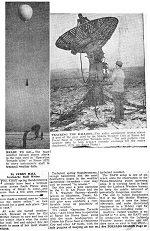 |
| 1954: The WSR-1 radar is installed at the Lubbock Airport. This radar was salvaged from a WWII bomber and converted for weather use with funding from the City of Lubbock, Lubbock County and the Lubbock Board of City Development. This radar currently resides at Texas Tech University as shown in the photos to the right. | 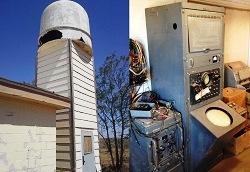 |
| June 1964: A mobile weather data logger is activated for the purpose of recording dozens of soil temperature and wind observations at farms throughout the South Plains. | 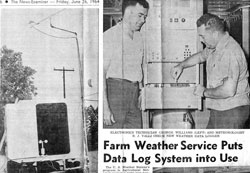 |
| 1965: The office moves to the Executive Air Terminal Building on the east side of the airport. | |
| May 11, 1970: At 10:05 PM CDT, the dissipating stage of the infamous Lubbock F5 tornado struck the Lubbock Weather Bureau Office and registered a peak wind gust of 77 knots (89 mph). This gust is shown in the official wind data recording to the right. Note: time scale is in CST. | 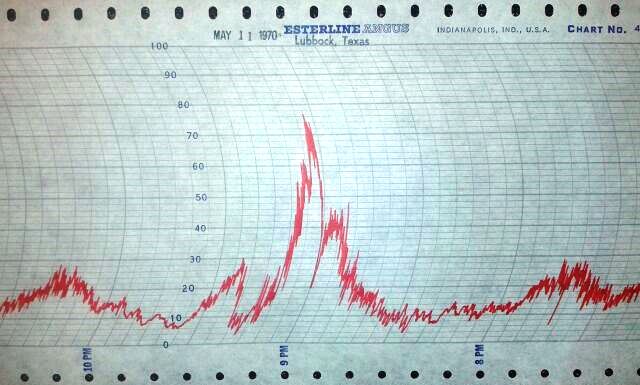 |
| October 1, 1970: The U.S. Weather Bureau is renamed the National Weather Service. Also, the Environmental Science Services Administration (ESSA) is renamed the National Oceanic and Atmospheric Administration (NOAA). | 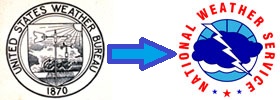 |
| May 15, 1972: NWS Lubbock becomes a regional forecast office and in the process assumes forecast responsibility for 79 counties across the western 1/3 of Texas. Compared to the original 24 counties, this monumental increase in responsibility necessitated the hiring of six additional forecasters. | 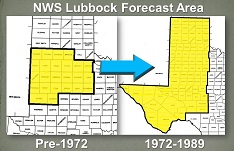 |
| May 15, 1972: An official office dedication ceremony celebrates NWS Lubbock becoming a regional forecast office. This event was well attended by local, regional and national NWS entities. Several local media and members of the general public also gathered for this event. | 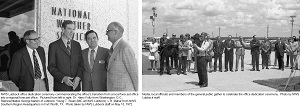 |
| May 15, 1972: Office staff photo following the dedication ceremony. Standing (L-R): Ted Sheehan (Observer), Oliver Newton (CPM), Dennis Noble (Lead Forecaster), Johnny Graham (Lead Forecaster), Larry Peabody (Lead Forecaster), Young Sloan (MIC), Lou Norton (Principal Assistant), Jerry Uecker (Observer), Kenn Wigner (Forecaster). Seated (L-R): Melvin Dunnigan (Observer), Dave Wheeler (Observer), Art Walkowiak (Forecaster). |
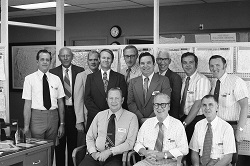 |
| June 1972: Twenty-five experimental hail detectors are installed at various NWS Cooperative Observer stations within 75 miles of Lubbock. These devices are equipped with an impact shield and wind vane to better understand the degree of damage inflicted by wind-driven hail and to also better correlate hail size with reflectivities measured by radar. These instruments were gradually phased out over the next decade once sufficient data were collected. | 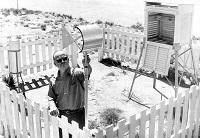 |
| Summer 1972: Photos of the NWS Lubbock observer desk on left (Larry Peabody) and the forecast and analysis desk on right (Leo Thurmond). |  |
| August 1973: The first NWS WSR-74C radar is installed at the Lubbock Airport. Lubbock was chosen as the site for this new radar due in large part to widespread attention following the Lubbock F5 tornado of 1970. This radar replaced the antiquated WSR-1 radar which was relocated to Texas Tech University for research purposes. | 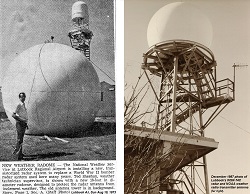 |
| August 27, 1973: Linda Djerf becomes the first female meteorologist at the Lubbock NWS office and also the very first female hired in the NWS southern region spanning 10 states! Women technicians were employed at the Lubbock office as early as the 1940s, however Linda was the first female forecaster on station. | 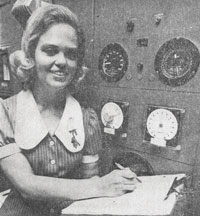 |
| March 1974: One of 20 experimental tornado detectors designed for Tornado Alley is installed at the Lubbock NWS office. By modern standards, this detector was crude and consisted of a four-cornered antenna that detected lightning within a 40-mile range. When the lightning flash rate increased to 15 or more strokes per minute, a red warning light would illuminate on the control panel. Such a threshold was thought to be correlated with tornadic storms, but as this experiment progressed the results were deemed too inconsistent and the instrument was abandoned by the early 1980s. | 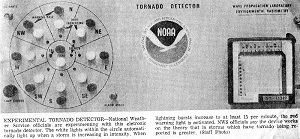 |
| March 31, 1978: Lubbock's first NOAA Weather Radio transmitter is installed north of the airport. Many years later, additional transmitters were installed at Plainview, Childress, Summerfield, and Dickens. The original Lubbock transmitter served a long life until its replacement on November 18, 2014. |  |
| June 1976: The Lubbock office begins issuing 24-hour quantitative precipitation forecasts (QPF) for 79 counties across West Texas. This outlook offers an approximation for expected rain and/or snow totals often used by farmers and ranchers. | 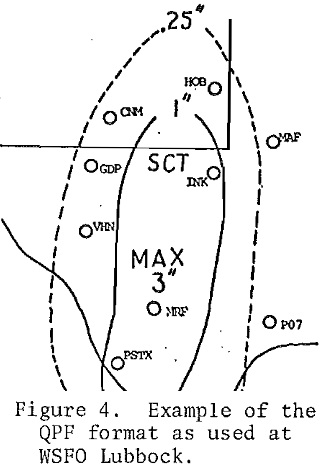 |
| Fall 1987: AFOS (Automation of Field Operations and Services) is installed at NWS Lubbock. This technological leap for its time allowed a faster flow of weather information to forecasters and ultimately to the public. The photo to the right shows AFOS at NWS Lubbock in 1987. Pictured (L-R): Carl Hill (ESA), Kenn Wigner (Lead Forecaster), Carla Minnsen (Secretary), Andy Anderson (MIC). | 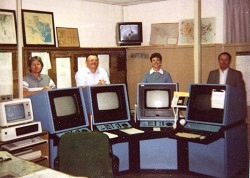 |
| December 1987: Office staff photo. Back row (L-R): Chuck MeGee, Kenn Wigner, Lloyd Hopwood, Carla Minsenn, Ron McQueen, Joe Bayer, Ernie Pelto, Jose Valdez, Leo Thurmond, Andy Anderson. Front row (L-R): Bill Alexander, Carl Hill, Jack Jackson. | 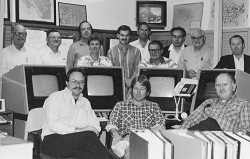 |
| 1989-1995: As part of the NWS modernization initiative, NWS Lubbock's forecast area was gradually reduced in size from 79 counties to 24 to account for emerging forecast offices in Amarillo (1989), Midland (1994), El Paso, and San Angelo. Occasional modernization difficulties from 1990 through 1993 resulted in WFO Lubbock temporarily re-assuming forecast responsibility for all of the Texas Panhandle and even the Oklahoma Panhandle. However, by late 1995 NWS Lubbock's present day 24-county forecast area was firmly established. | 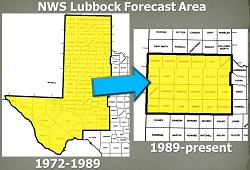 |
| December 1993: The Lubbock NWS forecast office moves from the airport to the Science Spectrum building. Hourly weather observations remain at the airport to the present day. |  |
| April 4, 1994: The WSR-88D radar is commissioned at the Lubbock Airport. The radar offers significant improvements over the outgoing WSR-74C; the greatest of which is its ability to detect rotation within storms. | 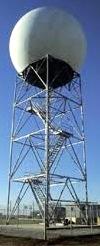 |
| 1994: View of the NWS Lubbock operations floor in 1994 showing AFOS terminals, the PUP workstation and additional weather data displays. | 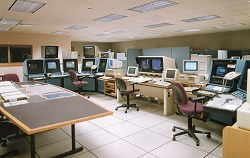 |
| September 1, 1995: The Lubbock Automated Surface Observing System (ASOS) is commissioned. This system is augmented (i.e. quality controlled) by human weather observers at Lubbock, but is a standalone system at the Childress airport. | 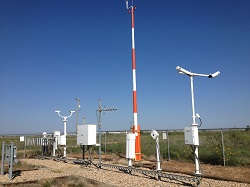 |
| 1996: NWS Lubbock makes its first appearance on the World Wide Web under the URL "dryline.nws.noaa.gov". Although primitive in appearance, the available weather information proved invaluable for weather enthusiasts including many storm chasers. In the following years, NWS standardizations made all NWS web pages similar in appearance and functionality. | 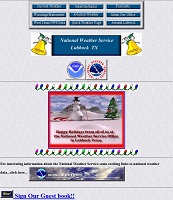 |
| 1999: Advanced Weather Interactive Processing System (AWIPS) replaces AFOS and affords far greater weather data processing and much faster generation of weather watches and warnings. The photo to the right shows forecaster Jeff Vitale at an AWIPS terminal on April 21, 2010 during a severe weather event. | 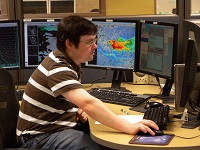 |
| February 8, 2004: Justin Weaver becomes the eighth Meteorologist-in-Charge at WFO Lubbock. | 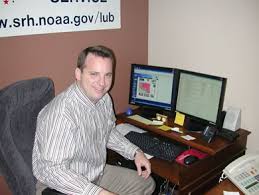 |
| Summer 2004: In an effort to keep a human element to NOAA All-Hazards Radio, forecasters at NWS Lubbock begin reading and recording a brief daily weather synopsis four times each day - a tradition which continues to this day. This effort also keeps forecasters proficient with manual weather radio overrides should automated products fail to generate. Here, Jerry English is seen recording a soil temperature summary for area farmers in 2006. | 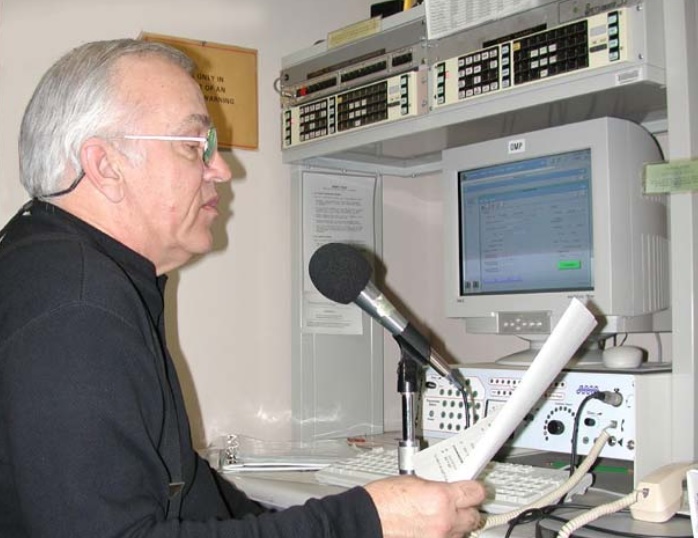 |
| March 27, 2013: Lubbock's doppler radar is upgraded to dual polarization. This feat allows for better discrimination between various types of precipitation and also provides more accurate rainfall rate estimations critical for the forecasting of heavy rain and flooding. | 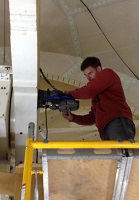 |
| May 20, 2013: With an active dryline east of the forecast area, much of the NWS Lubbock staff gathered for an office picture. Left to right: Jason Jordan, Mike Samuelson, Steve Cobb, Robert Barritt, Justin Weaver, Mark Conder, Matt Ziebell, Gary Skwira, Charles Aldrich, Brad Charboneau, Marsha Black, Jonathan Guseman, John Lipe, Jenn Daniel, Felecia Bowser, John "Gusty" Holsenbeck, Jody James. | 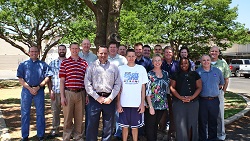 |
| January 20, 2015: After nearly 15 years of using AWIPS 1, AWIPS 2 is installed at NWS Lubbock. This revolutionary upgrade allows forecasters to plot and analyze weather data with even greater flexibility and efficiency than before. | 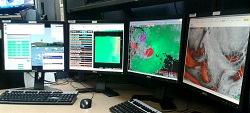 |
History of Meteorologists-in-Charge at Lubbock
Leo Weaver (November 1946 - October 1948)
Harold "Jack" Frost (October 1948 - May 1972)
Young Sloan (May 1972 - 1975)
Billy Crouch (1975 - 1982)
W.R. "Andy" Anderson (July 1982 - July 3, 2000)
David "Rusty" Billingsley (July 2000 - February 2002)
Larry Vannozzi (February 2002 - January 2004)
Justin Weaver (February 8, 2004 - present)